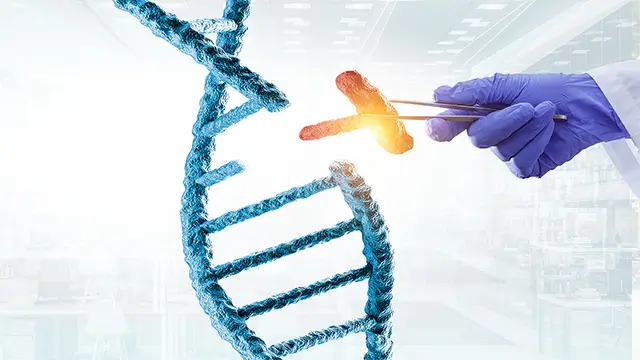Do you know that a simple genetic test can identify your risk of developing cancer? These days, you don’t even have to go to a hospital to get tested. Affordable and portable kits are available, and many can be used at home, which means an easy test at home could tell you about your ancestry or predict your risk for diseases.
After reading this article, you’ll have a clearer understanding of both genetic testing (DNA tests) and gene editing.
Let’s start with “what is gene”.
Understanding DNA: How Genes and Genomics Shape Your Health Profile
About Genes:
Genes are small sections of DNA—the code that tells your body how to grow, function, and heal. You inherit your genes from your parents, and they determine everything from your eye color to your risk of certain diseases. Some genes protect you, others might carry mutations that make you more vulnerable.
Genetic testing is a way to “read” your DNA and understand what’s written in your body.

What Is Genetic Testing, and What Can It Tell You?
Genetic testing involves analyzing your DNA to look for changes or mutations in your genes. These tests can reveal useful insights like:
Health risks: Are you more likely to develop certain cancers, heart conditions, or inherited disorders?
Carrier status: Will you pass on a genetic disorder to your children?
Drug response: How might your body react to specific medications (also called pharmacogenetics)?
Ancestry & traits: Where do your ancestors come from? What traits run in your family?
It’s no longer just for scientists or patients with rare diseases. Today, anyone can get tested—sometimes with a simple saliva sample.
At-Home DNA Kits vs Clinical Genomics: Choosing the Right Genetic Testing Solution
Genetic testing generally falls into two categories: clinical genetic testing and non-clinical or DIY/DTC (direct-to-consumer) genetic testing.
Clinical Genetic Testing: These tests are ordered by doctors and used in hospitals or healthcare settings. They’re highly regulated. Clinical tests can confirm a diagnosis, guide treatment plans, or help couples with family planning.
Non-Clinical or DIY Genetic Testing: There’s the kind you see advertised online—think 23andMe, MyHeritage DNA, AncestryDNA and so on. Companies like 23andMe and MyHeritage DNA offer convenient at-home kits that provide health insights, ancestry breakdowns, and even pharmacogenetic reports. These services are easy to order online and often come with data privacy guarantees.
These DTC tests are user-friendly and deliver fast results. Some people even take them just for fun.
But here’s the catch: they may not be as thorough or accurate as clinical tests. Before acting on results from DTC kits, it’s wise to speak with a certified genetic counselor. Platforms like color offer virtual consultations that can explain your results in medically meaningful ways.
Privacy of Genetic Testing
Although genetic testing is quite interesting and some people have already tried it, we cannot ignore the privacy issues involved in the process of genetic testing. Unlike your credit card or email, your genetic data can’t be changed. Once it’s out there, it’s out there.
You might be wondering—are we protected by any laws? Yes, laws like the Genetic Information Nondiscrimination Act (GINA) offer some protection, but it’s far from perfect. So remember always read the fine print before sending off your sample.
To protect your sensitive health data when using these services, a secure VPN ensures your data security during online genetic uploads. For broader protection, tools like Aura Identity Guard offer real-time monitoring of medical ID breaches.
Gene Editing
Now that you have some knowledge about genetic testing, have you heard of gene editing? Have you ever imagined a future where you communicate with people grown from pre-designed embryos? It almost feels like I’m talking to an AI instead of a real person!
You already know that genetic testing tells you what’s in your genes—but gene editing asks: Can we change them?The answer is yes.
Technologies like CRISPR now allow scientists to “edit” genes just like editing a computer document. It could potentially cure diseases by removing faulty sections of DNA. This is revolutionary for conditions like sickle cell anemia or certain cancers.
Gene editing sounds quite mysterious, but there are already examples of gene editing in a shocking way—”world’s first gene-edited babies“.

According to The Guardian, He Jiankui, the scientist who claimed to have created the world’s first “gene-edited” children, has been sentenced to three years in prison for violating medical regulations. He has now returned to his lab to work on treatments for Alzheimer’s, Duchenne muscular dystrophy, and other genetic diseases.
He created the babies using reproductive cell editing, a controversial technique that alters the genes of embryos before birth.
Somatic vs Germline Editing: The Science and Ethics Behind Genetic Intervention
Actually, scientists usually classify gene editing into two types:
Somatic cell editing:
This type of editing targets certain cells in the body (such as lung cells, liver cells, and blood cells). The modifications are only effective for the individual undergoing the treatment and will not be passed on to the next generation. As long as humans use this type of editing to treat serious diseases, most scientists and ethicists worldwide currently consider it acceptable and encourage research, because it is essentially closer to traditional gene therapy.
Reproductive cell editing:
This type targets reproductive cells (sperm, eggs) or early embryos. Once the modification is successful, it is passed on to all future generations. Reproductive cell editing is the most controversial and worrying type because it opens a Pandora’s box.
The good side: it can cure genetic diseases at the root, reduce hereditary risks, enhance drug effectiveness, and improve crop resistance.
The risks: unknown long-term effects, potential for misuse (e.g., “designer babies”), and potential to widen social inequality if only the wealthy can afford it.
The Ethical Side of Gene Editing: Are We Playing God?
In addition to the drawbacks listed above, gene editing raises some big ethical questions:
Should we edit embryos to prevent disease?
What counts as a “desirable” gene?
Who decides what’s normal or abnormal?
How do we ensure genetic tools aren’t used to discriminate?
Experts argue that without strong global policies, gene editing could lead to discrimination. On the flip side, ignoring the potential benefits could deny life-saving treatments to those in need
Final Thoughts
Genetic testing gives us power—power to understand ourselves and prevent illness. But to make full use of it, you need to choose reputable testing companies, talk to a genetic counselor or doctor about results and stay informed about your data rights and privacy.
As for gene editing, you can learn more about it, view it rationally, and keep your own opinions.





